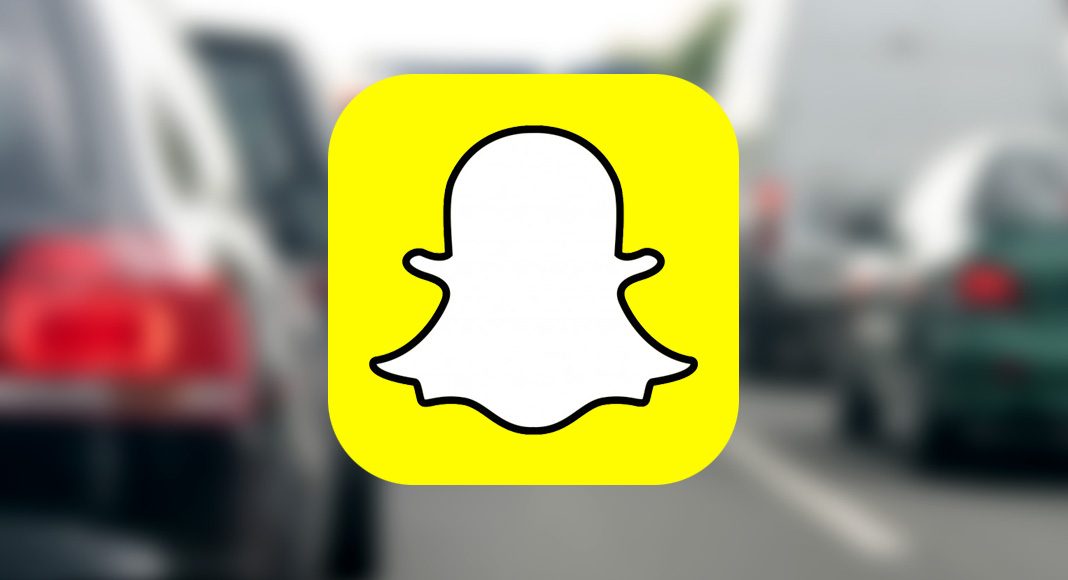I have to admit that I didn’t know what Snapchat was until a few months ago. Now, it appears Snapchat is quite a hot topic, especially when it comes to teenagers and safe driving.
In recent weeks there has been extensive media coverage of a crash which happened in Georgia, USA, in which an 18-year-old female allegedly used a Snapchat ‘filter’ while driving which enables users to record their speed of travel and post it within the app.
She subsequently hit another vehicle at 107mph, leaving the other driver hospitalized for months and suffering permanent brain damage.
The crash took place in September of last year and it was recently reported that the victim had taken out a lawsuit, blaming Snapchat’s speed filter for the crash, as well as the teenage driver.
The 18-year-old driver – who also suffered injuries – went on to post a Snapchat picture from the ambulance as she lay on a backboard, in a neck brace with blood on her face. She captioned the image ‘Lucky to be alive’.
Those words couldn’t be more true, so why can’t some people resist using technology and apps such as Snapchat when the only thing they should be doing is driving?
What IS Snapchat?
Snapchat was created by two Stanford University students, Evan Spiegel and Bobby Murphy, who felt emoticons were not enough to convey the emotion a person might wish to send by a text message. However, they were also conscious that a quick snap of an emotion posted on a social media site could be inappropriate if it remained for a long period. The result was a photo sharing app with a time limit, Snapchat.
Launched in 2011, Snapchat now reportedly has around 100 million daily active users, with 8,796 photos shared on the app EVERY SECOND.
Who is using it?
In a word, teenagers! Of course, there are other users – corporates, even, are reportedly recognising the benefits – but it would be fair to say that teens appear to be the app’s biggest fans. Why? One reason, apparently, is that social media networks like Facebook are ‘so last year’. These days, teenagers’ parents are on Facebook; in fact, even their grandparents are on it. And unless users delete their updates, their profile is there for everyone to see, permanently.
So, it seems teenagers (and other users) are using Snapchat to send messages to their friends privately and temporarily (I should mention that there is a feature on Snapchat that enables recipients to take a picture of the message so there is a way of making the message permanent, but the app is still very different in nature to platforms such as Facebook and Twitter).
Fear Of Missing Out
The BIG problem with apps like Snapchat is that they appear to be fuelling the phenomenon that has been labelled FOMO – Fear Of Missing Out. For many teens, barely a minute goes by without them sending a quick update to their friends about what they are doing. And unfortunately, some young people are carrying this on while they are driving.
As well as the story mentioned above I’ve seen many more videos online that have reportedly been recorded while driving and posted on Snapchat. In one shocking story last year a teenager reportedly bragged about driving at 142mph on Snapchat – then smashed into a car the following day at 80mph, instantly killing the other driver.
Petition to remove speed filter
A petition has been set up on Change.org calling for Snapchat to remove the speed filter that was allegedly a factor in the Georgia crash.
A number of comments have been made that Snapchat is not to blame; rather users should take responsibility for their own actions.
And news stories following the crash have quoted a Snapchat spokesperson as saying that: “no Snap is more important than someone’s safety.
“We actively discourage our community from using the speed filter while driving, including by displaying a ‘Do NOT Snap and Drive’ warning message in the app itself.”
However, there is certainly an argument that features like Snapchat’s speed filter are a temptation for users to drive fast – and use their phones at the wheel – when they should be doing nothing else other than concentrating on the driving task. This is particularly problematic when these very users are likely to be teens, who are already the most at risk age group on the road, with distracted driving one of the major risk factors.
A study carried out by the AAA Foundation for Traffic Safety recently concluded that six out of 10 moderate to severe teen crashes were the result of driver distraction.
Researchers analysed the six seconds leading up to a crash in nearly 1,700 videos of teen drivers taken from in-vehicle event recorders – and found distraction was a factor in 58 per cent of all crashes studied, including 98 per cent of road-departure crashes and 76 per cent of rear-end crashes. In 12 per cent of the crashes the cause of distraction was cellphone use.
Snapchat can be fun… but not while driving
If you are a fan of apps like Snapchat – or you are the parent of a teen who uses Snapchat or other apps/ social media networks – make sure this hobby is NOT mixed with driving.
While driving there is NOTHING worth picking your phone up for and nothing worth sending a message/ posting a status for. Remember that Snapchat messages last for a maximum of 10 seconds – is that really worth risking your life for?
I’ve included some other links below which might be of interest.
http://www.sanduskyregister.com/Law-Enforcement/2014/09/03/Indictment-in-Snapchat-crash.html
http://6abc.com/technology/did-snapchat-play-role-in-deaths-of-3-young-women/1196846/
Tips for staying safe
Here are some tips for avoiding Snapchat and other social networks while driving:
- Put your phone well out of reach (such as on the back seat or in the boot/trunk)
- Turn your phone on silent so you don’t constantly hear alerts
- Ask passengers not to distract you by attempting to show you something on THEIR phone while you are at the wheel – even when stopped in traffic or at lights
What do you think? I’d love to hear your thoughts about drivers using social media or apps like Snapchat while at the wheel.

E-mail: oms@virtualriskmanager.net
Tweet us: @One_More_Second
Facebook: facebook.com/onemoresecond



















